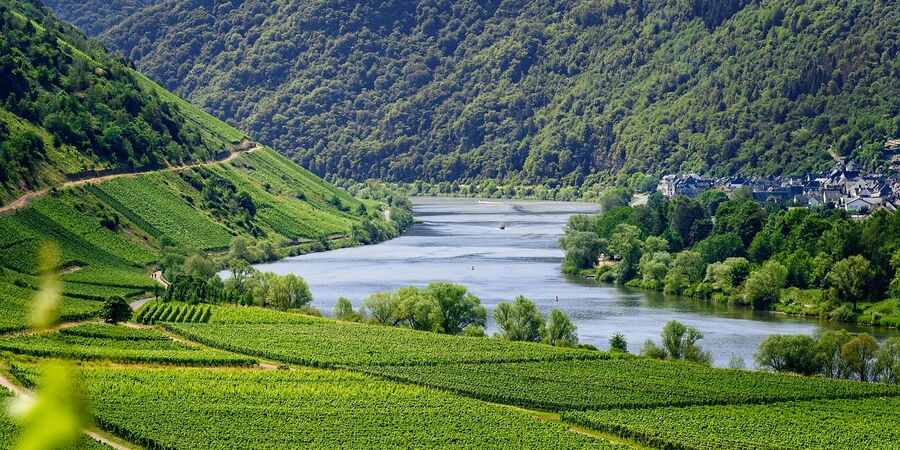Since the beginning of time, travel has been an indispensable part of human life. In the modern world, the various aspects of travel have been accommodated into an organized word ‘Tourism’. With the ease of booking travel, the industry has grown rapidly over the past few decades. Therefore, it becomes important to segregate the industry into various types for convenience of defining the purpose of each kind of travel. Let us explore some of the main types of tourism and how they differ from each other.
Different types of tourism
1. Leisure Tourism
Evident from the names, leisure tourism entails the activities and locations that will help one unwind, relax and enjoy the various aspects of their trip. Typically, leisure tourism includes an escape into the natural landscape, exploring manmade architectures while staying at a comfortable and hospitable accommodation. The tourists on leisure travel will book a stay in the luxury resort or can take shelter in offbeat homestays. It is generally an amalgamation of numerous things to do such as trying local cuisine, going shopping in the regional market, and participating in recreational activities.
Features
- Focuses on relaxation and enjoyment
- Involves sightseeing, shopping, and cultural experiences
- Often centered around beach vacations, city breaks, and entertainment
- Offers a break from routine and an opportunity to recharge
2. Business Tourism (MICE)

Business tourism or MICE tourism (Meetings, incentives, conferences and exhibitions) explores the realm of trips taken by the employees of various organizations. As working professionals, individuals are expected to attend meetings, conferences, seminars, exhibitions and other events to expand the reach of the business. Business tourism requires meticulous planning, budget forecasting, and comprehensive reporting by the admins and employees both.
Features
- Serves professionals attending meetings, conferences, and exhibitions
- Provides networking opportunities and knowledge sharing
- Contributes to economic development and industry growth
- Requires specialized facilities and services to cater to business needs
3. Adventure Tourism
Among the most exciting types of tourism, adventure tourism brings in the opportunity to indulge in thrilling activities revolving around natural settings. The exhilaration and physical challenges involved in this kind of tourism makes it rank among the top tourism types. The activities include skydiving, paragliding, base jumping, rafting, dune bashing, and whatnot. The excitement only gets elevated when friends and family are involved during the activities.
Features
- Emphasizes exciting and challenging experiences
- Includes activities like trekking, rock climbing, and bungee jumping
- Appeals to thrill-seekers and those seeking adrenaline rushes
- Provides opportunities for personal growth and pushing boundaries
4. Cultural Tourism
Cultural tourism allows travelers to immerse themselves in the traditions, history, and lifestyle of a destination. The engagement required in cultural tourism is of the highest level. Tourists can visit various museums, historical sites, art galleries, traditional markets and much more. Additionally, the opportunity to meet the local community and participate in various events increases the fun all the more.
Features
- Centers around exploration of a region’s history, traditions, and arts
- Involves visiting museums, historic sites, and attending cultural events
- Encourages interactions with locals to learn about their way of life
- Enhances cross-cultural understanding and appreciation
Suggested Read: Top 10 Business Travel Management Companies In India
5. Ecotourism

It is the type of tourism that deals with responsible travel to natural areas. Ecotourism promotes conservation of natural resources for the utilization of the future generations and consolidates sustainability. Travelers experience nature firsthand through activities like bird watching, nature walks, and wildlife safaris. The goal is to appreciate and protect the environment while supporting local authorities and communities.
Features
- Focuses on responsible travel to natural areas
- Aims to support conservation efforts and sustainable practices
- Includes wildlife observation, nature walks, and eco-friendly accommodations
- Offers opportunities to connect with nature and learn about ecosystems
6. Culinary Tourism
Culinary tourism is a delightful and immersive way to experience the heart of any destination – its food. It focuses on inviting travelers to try top authentic food of any specific country or region. Travelers savor the flavors, aroma, and traditional cooking techniques of local cuisines. The journey involves visiting numerous restaurants, participating in food events, going to offbeat destinations for original tastes, meeting worldwide chefs and much more. Travelers may also be enticed to cook alongside a teacher and learn new ways of cooking.
Features
- Revolves around exploring local cuisine and food culture
- Includes food tasting, cooking classes, and market visits
- Provides insights into regional flavors, ingredients, and cooking techniques
- Celebrates the role of food in cultural identity
7. Pilgrimage
Religious tourism or pilgrimage is a type of tourism involving spiritual upliftment of the travelers by visiting sacred sites, places of worship, and participating in religious events. It offers travelers a chance to know more about various religions while learning about the different practices of diverse cultures. Many travelers and worshippers believe it to be an opportunity to unite with God and find peace in their lives.
Features
- Focuses on visiting sacred sites, pilgrimage destinations, and religious events
- Provides spiritual experiences and connections to faith traditions
- Involves participating in rituals, ceremonies, and cultural practices
- Encourages reflection and personal growth
8. Wellness Tourism
To calibrate well-being, individuals can head to wellness tourism. Rooting from the seeds of self-care, well tourism provides the various leaves and branches for a holistic development and rejuvenation. Common activities may include spa escapes, yoga practices, sampling nourishing and healthy food, massages, etc. Hiking and trekking can also be part of the wellness plan. Tourists can visit various wellness centers for the betterment of body and mind.
Features
- Centers on promoting physical and mental well-being
- Involves spa treatments, yoga retreats, and meditation practices
- Offers relaxation, stress relief, and rejuvenation
- Emphasizes self-care and a healthy lifestyle
9. Rural Tourism
Rural tourism presents a serene escape to the idyllic countryside. It’s a journey that invites individuals to step away from the bustling urban landscape and embrace the simplicity and authenticity of rural living. Encompassing an array of enriching experiences, rural tourism offers the chance to participate in hands-on activities such as farming, tending to animals, and partaking in time-honored rural traditions.
Features
- Offers a retreat to rural areas and countryside
- Involves farm stays, agricultural activities, and rural experiences
- Provides a chance to reconnect with nature and experience traditional lifestyles
- Supports local communities and sustainable agriculture
Tourism is a vast industry expanding with every day of the year. Though there are numerous types of tourism, embarking on the journey with a purpose remains constant. Hope the blog was able to provide you with the basics of various types of tourism and how the industry spreads out in several other branches.
Suggested Read: 7 First Time Business Travel Tips For A Flawless Trip
Types Of Tourism FAQs
What are the key features of leisure tourism?
Leisure tourism emphasizes relaxation and enjoyment, involves sightseeing, cultural experiences, and is often centered around beach vacations, city breaks, and entertainment. It offers a break from daily routines and a chance to recharge.
What are the distinctive features of business tourism (MICE)?
Business tourism provides networking opportunities, contributes to economic development, and requires meticulous planning, budgeting, and reporting.
What is ecotourism, and what is its primary focus?
Ecotourism is a type of tourism that promotes responsible travel to natural areas. Its primary focus is on conservation of natural resources, sustainability, and experiencing nature firsthand through activities like wildlife observation, nature walks, and eco-friendly accommodations.



